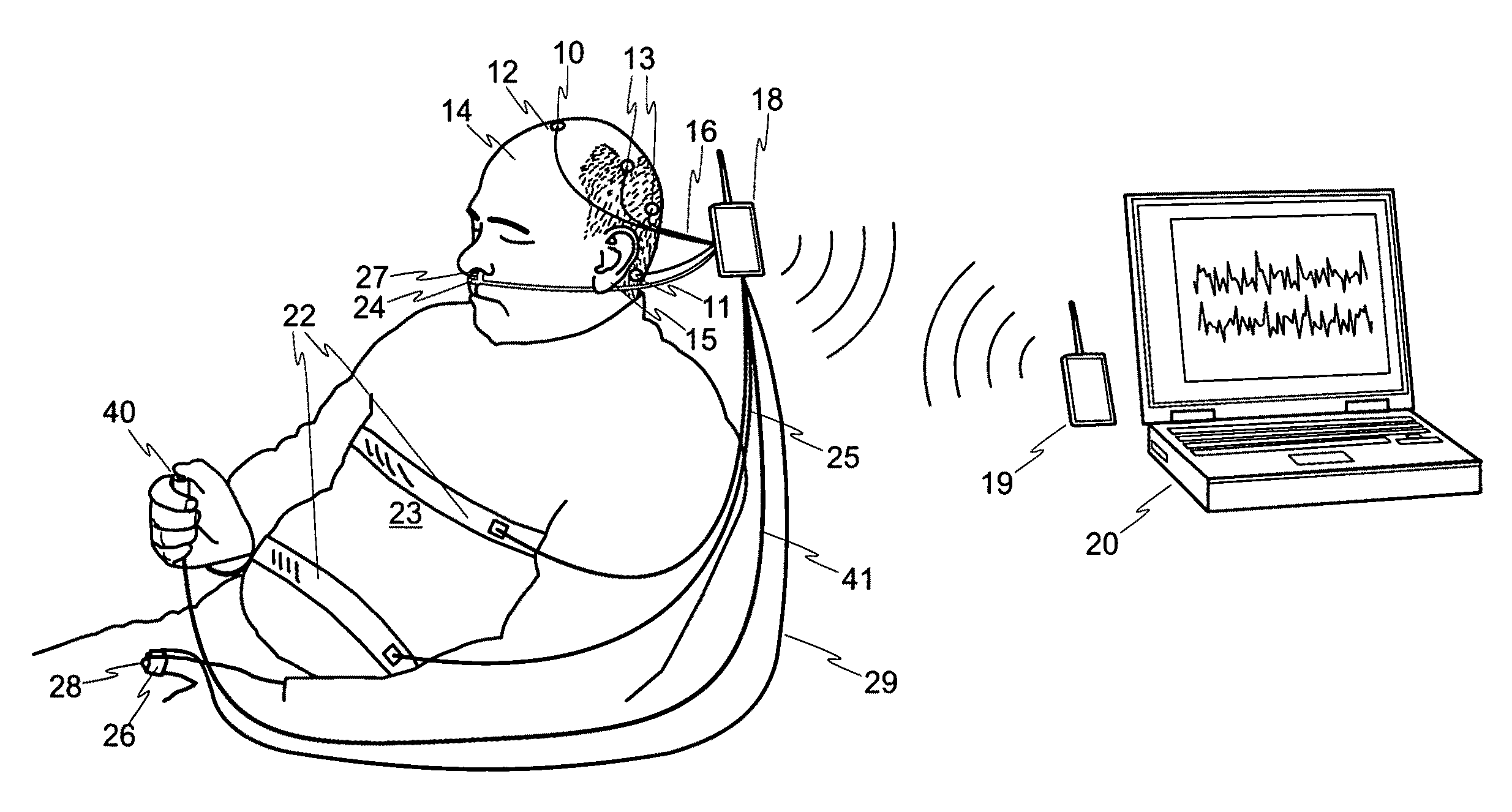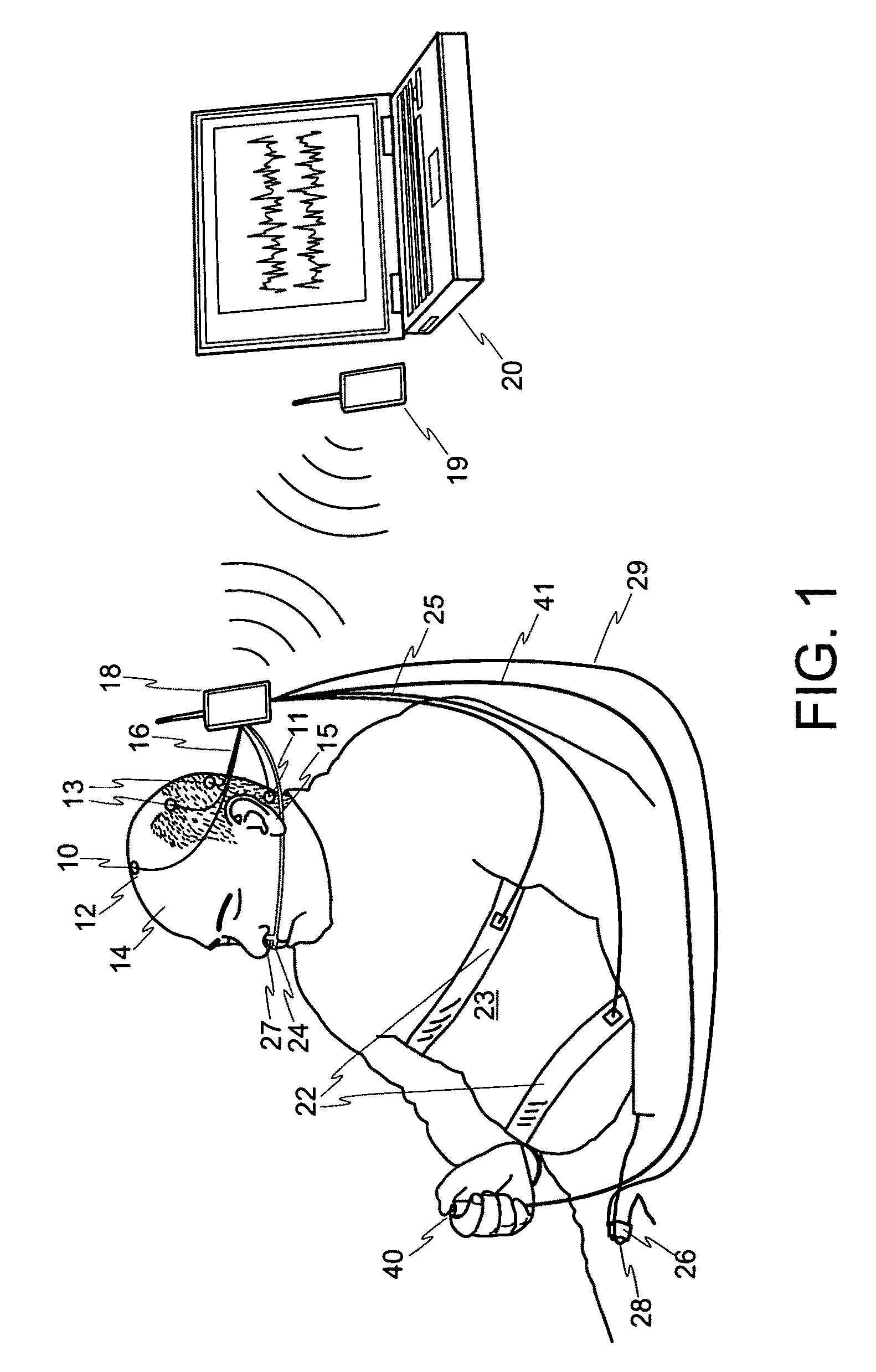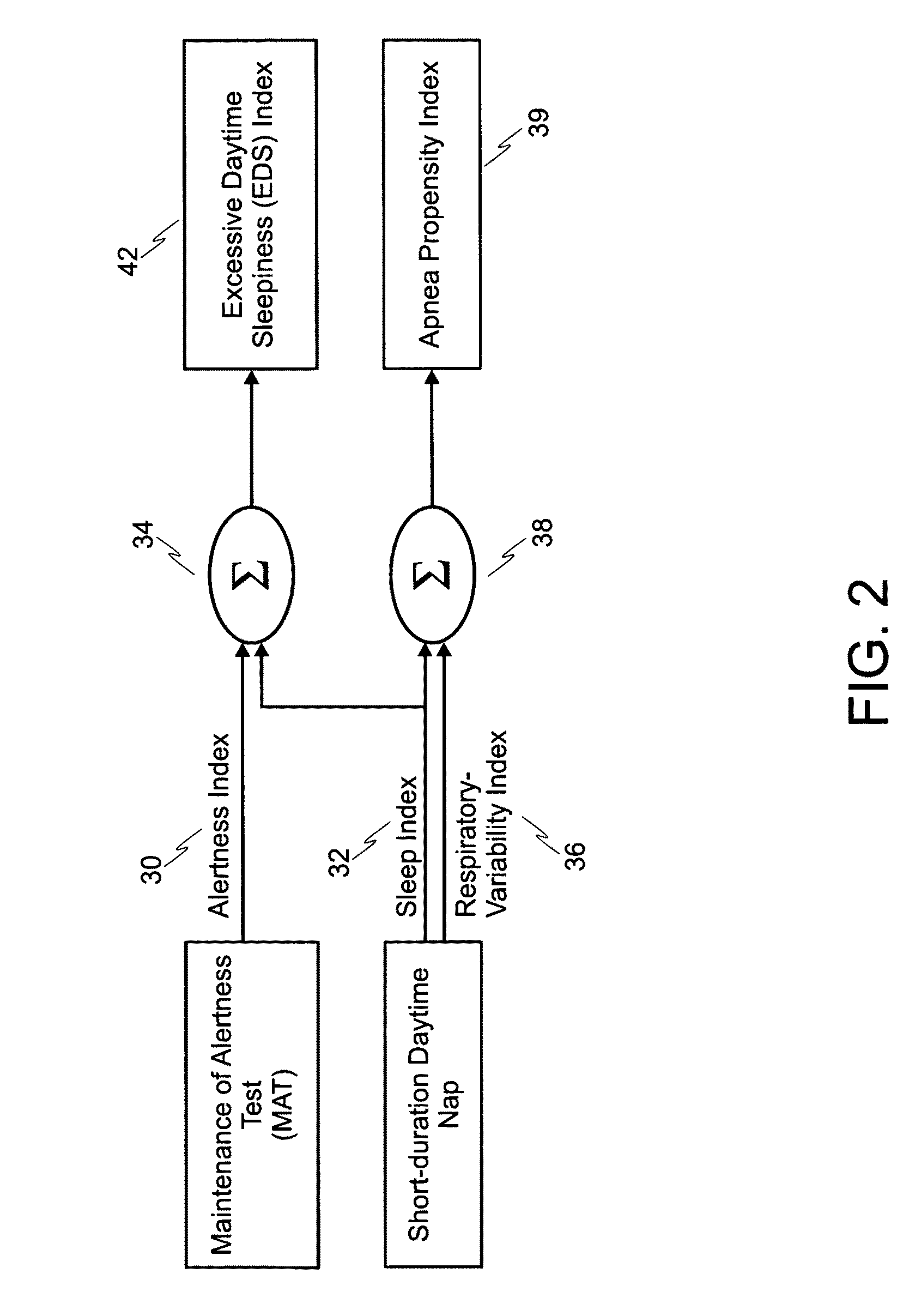Ambulatory sleepiness and apnea propensity evaluation system
a propensity evaluation and sleepiness technology, applied in the field of ambulatory sleepiness and apnea propensity evaluation system, can solve the problems of limited utilization of current popular methods of clinical assessment of eds, and achieve the effects of cost saving, time saving, and convenient us
- Summary
- Abstract
- Description
- Claims
- Application Information
AI Technical Summary
Benefits of technology
Problems solved by technology
Method used
Image
Examples
Embodiment Construction
[0028]The present invention relates to a method of analyzing a subject for excessive daytime sleepiness (EDS) as well as a quick quantitative method for analyzing a subject for sleep apnea. The present invention additionally relates a device for use in detecting EDS and another device for use in detecting subjects likely to have pronounced respiratory disorders, such as hypopneas and obstructive and central sleep apneas.
[0029]Functionally, the present invention may consist of two subsystems. The first subsystem includes methods and devices automatically and objectively quantifying an individual's level of alertness based during simultaneous analysis of behavioral and neurophysiological (particularly EEG) responses from a short test which stimulates the subjects senses. A sleepy or drowsy subject will exhibit an increased response time and performance errors as well as a more sleepy EEG profile. This subsystem produces what the applicants call an alertness index, which is a quantific...
PUM
 Login to View More
Login to View More Abstract
Description
Claims
Application Information
 Login to View More
Login to View More - R&D
- Intellectual Property
- Life Sciences
- Materials
- Tech Scout
- Unparalleled Data Quality
- Higher Quality Content
- 60% Fewer Hallucinations
Browse by: Latest US Patents, China's latest patents, Technical Efficacy Thesaurus, Application Domain, Technology Topic, Popular Technical Reports.
© 2025 PatSnap. All rights reserved.Legal|Privacy policy|Modern Slavery Act Transparency Statement|Sitemap|About US| Contact US: help@patsnap.com



